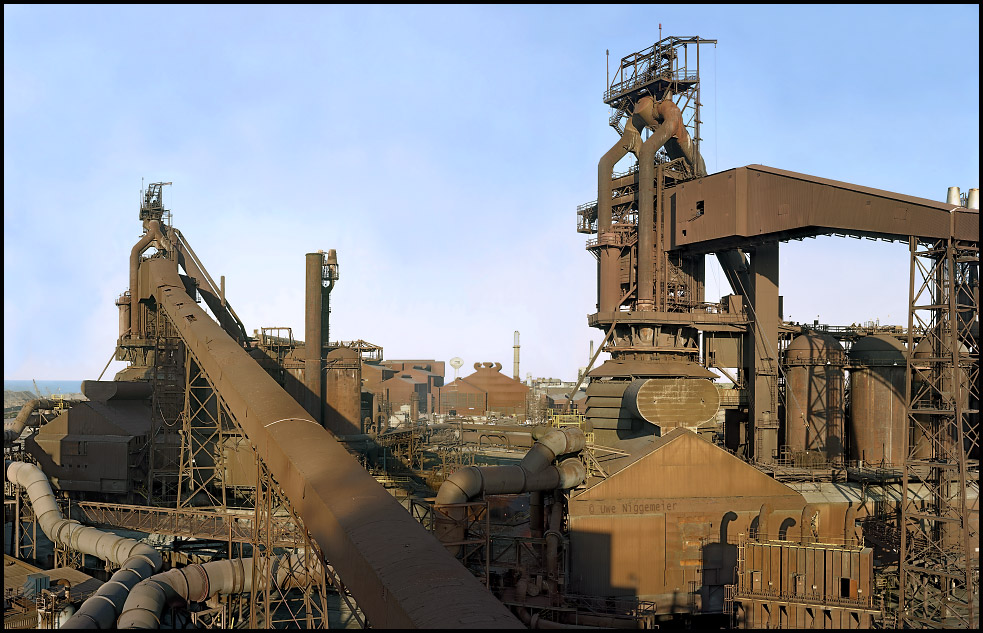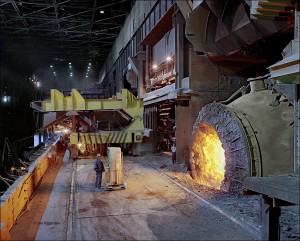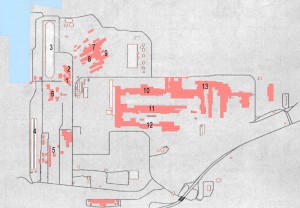50 years ago the Bethlehem Steel Company from Pennsylvania started building a new, state of the art, integrated mill on the banks of the Lake Michigan. 3000 acres of land, neighbouring US Steel’s Gary works, were purchased and construction started in late 1962. Probably few could have imagined that Burns Harbor would be the last integrated mill in the U.S. to be built until today.
In 1964 the 160 “ plate mill was started followed in 1966 by the 80” hot strip mill. In between 1969 and 1972 two blast furnaces, a coke plant (164 coke ovens) and a steel mill, containing two 300 ton BOF vessels were started.In 1975 Bethlehem Steel’s first continuous slab caster started production. In 1978 a 110” plate mill and a third BOF vessel became operational.In 2000 the last ingots were poured.
After filing bankruptcy Bethlehem Steel was taken over by the International Steel Group (ISG) in 2003. Two years later Burns Harbor became part of Mittal Steel USA (ArcelorMittal since 2007).
Further images.
1: Blast furnace C
2: Blast Furnace D
3: Ore storage
4: Coal Storage
5: Coke plant
6: Sinter plant
7: BOF shop
8: Slab caster 1
9: Slab caster 2
10: 80″ hot strip mill
11: 160″ plate mill
12: 110″ plate mill
13: Cold rolling mill




burns harbor and sparrows point were the only plants bethlehem built all others were aquired
they use to have a model in rmh j-5 that also showed a bar mill plus the other blast furnaces and other things ma beth planned to build but never got done piss poor mgmt
worked at the sinter plant for 45 years 1975 to 2020 part of iron producing
Bethlehem Steel Sparrows Point was larger than Burns Harbor and was the largest in the free world.
Hey dropping in on this very old thread with a question about Burns Harbor; I know operations today by Cleveland Cliffs employs about 707 people, but what would Burns Harbor employed at the height of its power- say, 1970? Given that it’s what- the second largest integrated mill behind Gary Works, which employed in some form 30,000 at its height, I would have to imagine it approached that number, but I can’t find any sources to confirm this. Could any of you offer any insight?
Infrastructure for A&B Furnaces was installed, the furnaces were never built. There are plant drawings that show 8 Blast Furnaces were planned.
I guess they were pretty sure to have A & B soon.
Excellent documented and outstanding image collection. From my knowledge, both blast furnaces are currently in operation. Strange that they called them “C” and “D”, as they were the only ones on site…